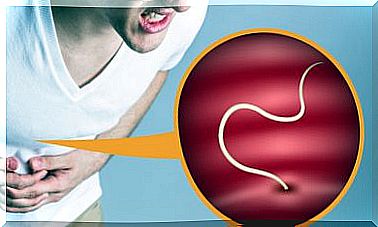30 Signs Of Diabetes That Appear On The Skin
Signs of diabetes that appear on the skin suggest both the presence of the disease in the initial stages, as well as the appearance of complications in other stages or a reaction to treatment.
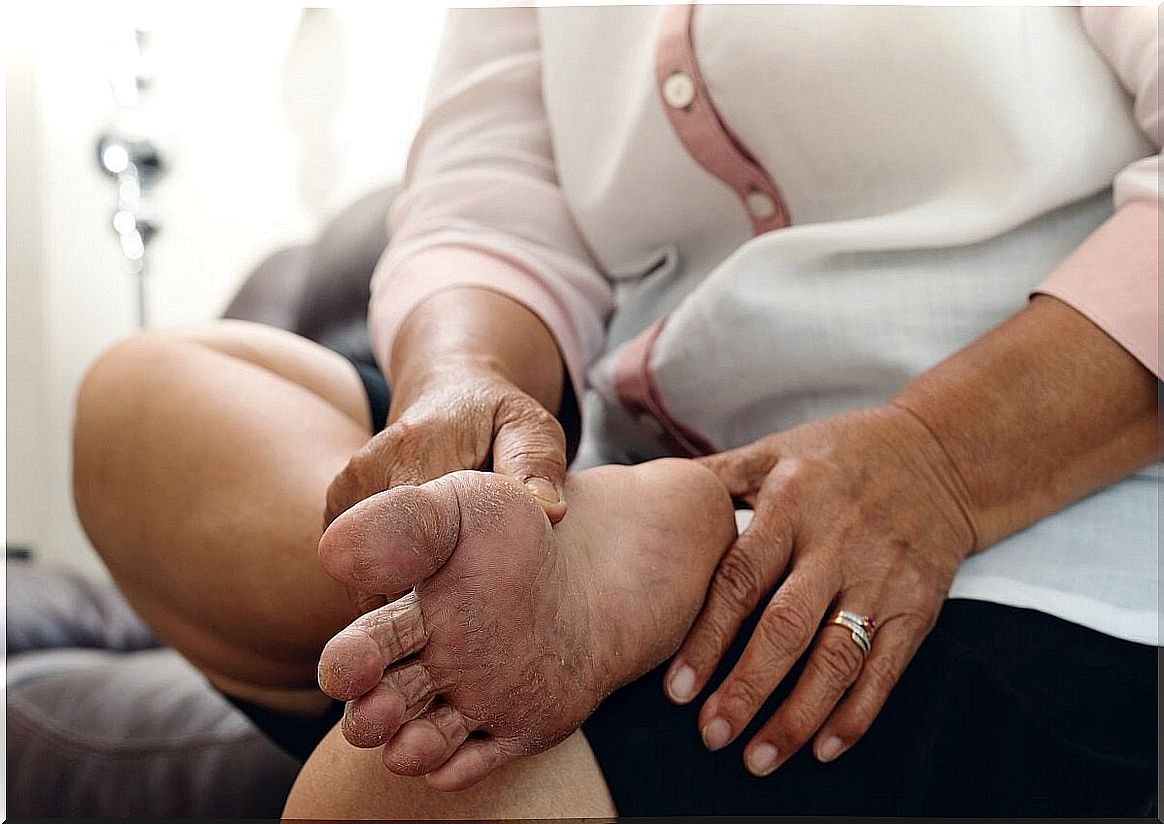
There are several signs of diabetes that show up on the skin. It is estimated that up to 30% of people with diabetes present some type of skin symptom at the beginning of the disease. According to some authors, up to 100% of those affected have skin problems during the course of the pathology.
Many of the signs of diabetes on the skin are not critical in themselves, but they can become serious due to the diabetic condition. A dermatologist is able to recognize these symptoms and indicate the management that should be given.
Diabetes and its manifestations on the skin
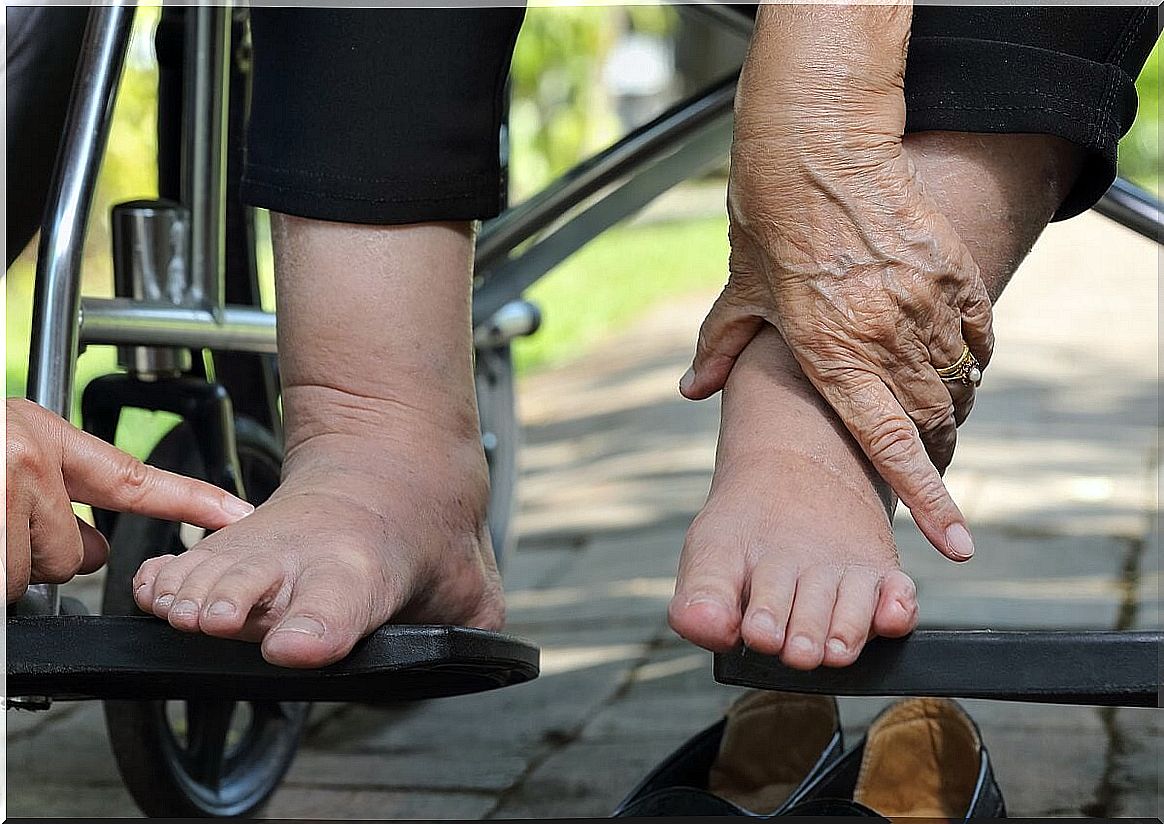
The signs of diabetes that appear on the skin are very varied. A study carried out at the L. Lagomaggiore Hospital showed that 90.2% of diabetic patients had some dermatological condition.
Based on the nature of the signs of diabetes manifested on the skin, skin conditions are classified into five groups: specific skin markers, associated skin manifestations, skin manifestations of complications, infections, and skin manifestations of treatment.
Specific markers of diabetes mellitus
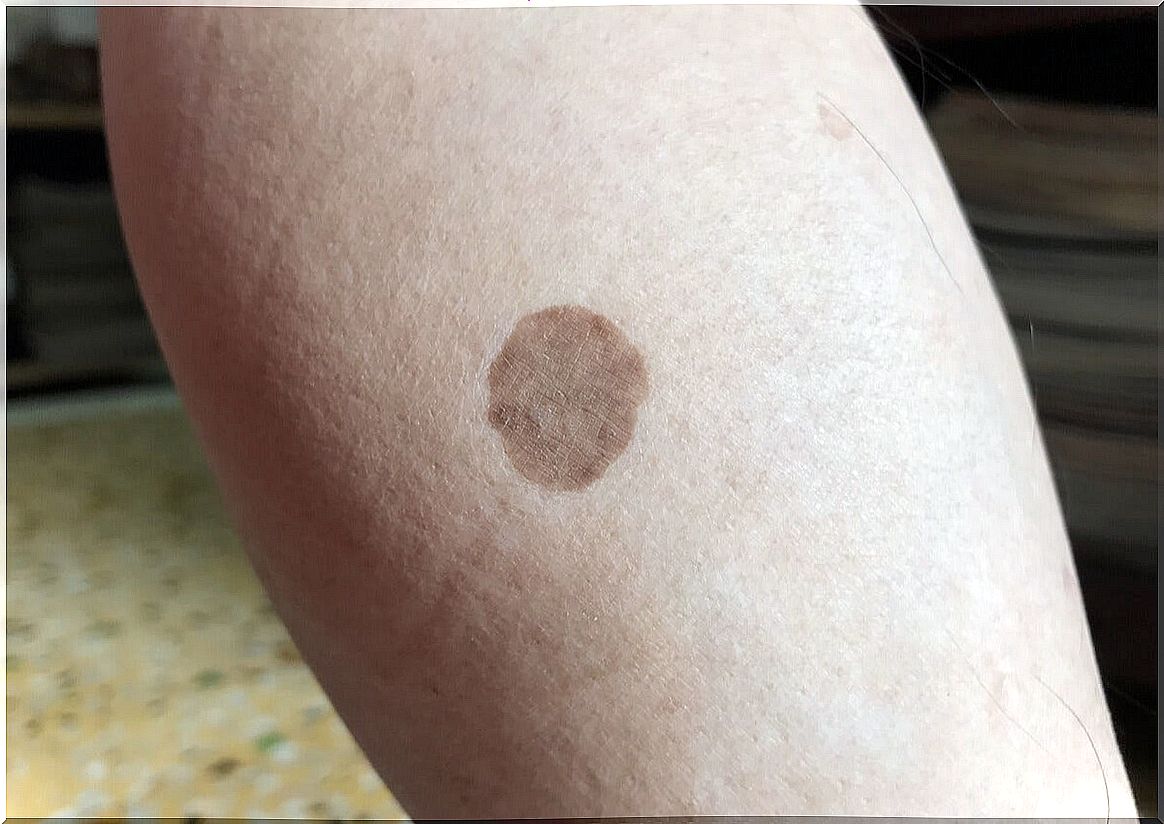
Within this group, there are the signs of diabetes mellitus that manifest themselves directly on the skin. In other words, they are specific symptoms of this disease. Within them we find the following.
Acanthosis nigricans – Dark, velvety area
The acanthosis nigricans or acanthosis nigricans is a skin condition in which appear dark and velvety texture areas. It arises in the folds and folds of the body, particularly in the groin, neck and armpits. It is estimated that it is present in 50-60% of people with diabetes.
Diabetic Dermopathy – Dark Macula
This is the most common of the signs of diabetes that shows up on the skin. It almost always appears in the anterior part of the tibia, known as the “shin.” At first, it looks like a pink or brown bump. Afterwards, it turns into a brownish spot without volume. It is present in 30-60% of diabetics.
Sclerederma diabeticorum – Thickened and hard skin in some areas
In sclerederma diabeticorum, the skin becomes thick and hard on the upper back, back of the neck, shoulders, and arms. It affects between 2.5 and 14% of patients with diabetes and is more prevalent in men.
Necrobiosis lipoidica diabeticorum – Reddish, yellow or brown spots
This is one of the rare signs of diabetes. It begins as red bumps, usually on the lower legs. Then they flatten out to brown and bright yellow in the center with red to purple edges. It occurs in 0.3% to 1.6% of diabetic patients.
Bullosis diabeticorum – Blisters
They are blisters that appear spontaneously, almost always on the forearms, legs, feet, and fingers. The content of the ampoules is light in color. They usually go away within a month, but they usually reappear. This is one of the signs of diabetes that is in 0.5% of those affected.
Granuloma annulare – Red bumps
They are small red papules or grains that converge and form round plates with a diameter of 1 to 5 centimeters. In the center, they preserve healthy skin, so they look like a ring. They usually appear on the backs of the hands, fingers, and planes of extension of the arms and legs. It is present in 0.3% of diabetic patients.
Eruptive Xanthomatosis – Reddish-yellow bumps
Eruptive xanthomatosis is characterized by the formation of red and yellowish bumps, usually on the buttocks, shoulders, arms, thighs, and legs. They are usually the size of a pea and are firm to the touch. Sometimes they form shades of orange and may have a halo around them. They appear in 0.1% of diabetics.
Acquired perforating dermatoses
They are a group of skin conditions, the main characteristic of which is the presence of nodules and papules that form crusty plugs. They appear on the extremities, the trunk, the dorsal region of the hands, and sometimes on the head. This condition occurs in patients with diabetes who also have kidney failure.
Associated skin manifestations
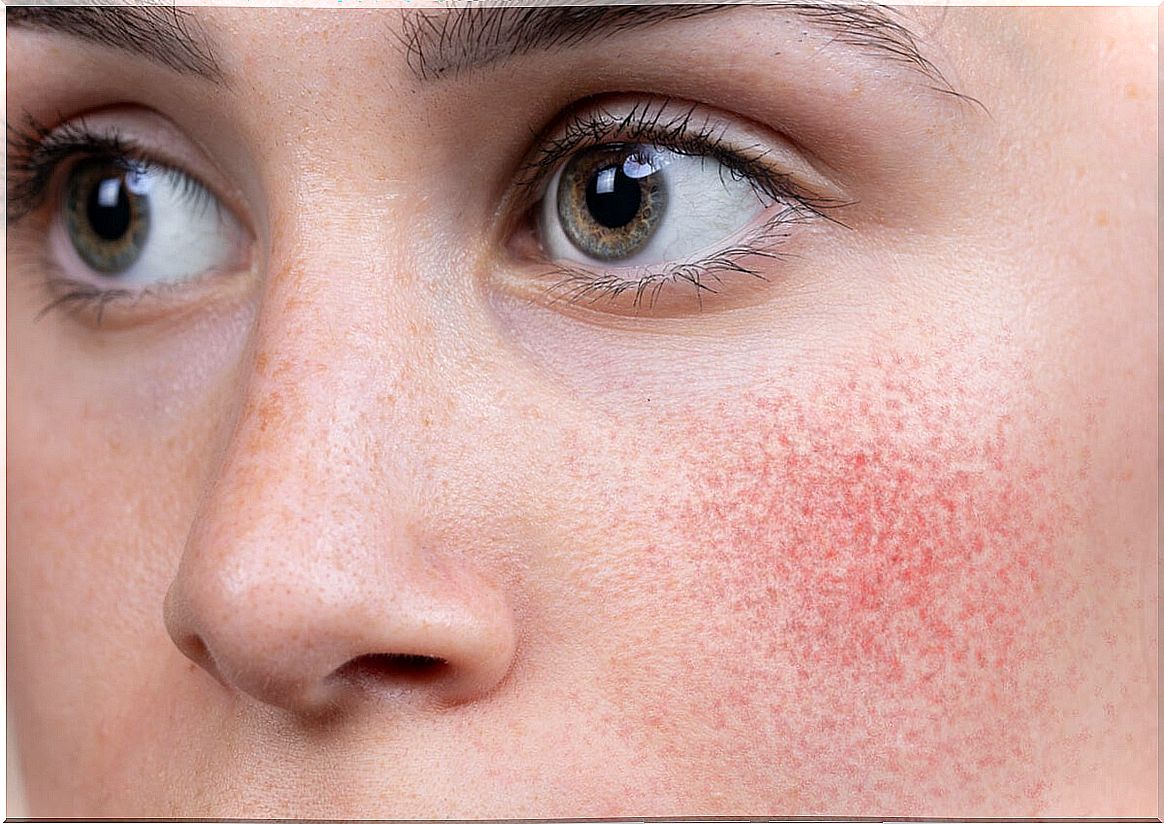
They include skin conditions that occur frequently in people with diabetes, but do not necessarily stem from the disease itself. They include the following conditions.
Skin thickening syndrome
It comes in three types : sclerederma diabeticorum (which we already talked about in the previous section), and the following:
- Generalized subclinical thickening of the skin. There is thickening, but this is so mild that it often goes unnoticed. It can occur anywhere on the body, but is most common on the hands and feet.
- Waxy skin with limited joint mobility. There is thickening of the skin on the back of the hands and on the fingers. It is accompanied by a reduction in the movement of the joints.
Skin conditions of the hands
It comes in three modalities; one of them is waxy skin with limited joint mobility, which we discussed in the previous subtitle. The other two are as follows:
- Digital paving. Many small papules appear that are grouped on the fingers of the hands. Also, they are known as Huntley’s papules.
- Dupuytren’s contracture. It is a deformity in which knots form under the skin of the palm of the hand. Sometimes they form cords that lead to the fingers remaining flexed.
Skin tags
They are growths on the skin, similar to warts, that typically grow on the neck, armpits, eyelids, and groin. They are benign and have no symptoms. It is estimated that they are present in 65 to 75% of people with diabetes.
Xanthosis
Xanthosis is another of the signs of diabetes on the skin. This condition manifests as a yellowish skin tone that is most evident on the palms, soles, nasolabial folds, and armpits. Such a color does not appear in the eyes.
Rubeosis faciei
The main characteristic of this condition is chronic redness of the face and neck. Available data indicate that it occurs in up to 59% of those affected by diabetes. It is considered a benign manifestation.
Periungual telangiectasia
Periungual telangiectasia presents as small, red, dilated veins around the nails. They can be seen with the naked eye and it is not one of the most typical signs of diabetes. It is believed to be present in about 49% of patients with this disease.
Pruritus
It is a tingling or itching sensation that can occur in a specific area or throughout the body. It occurs for many different causes. 25% of diabetics have this manifestation, which is more frequent in the vulvar or anal area.
Other
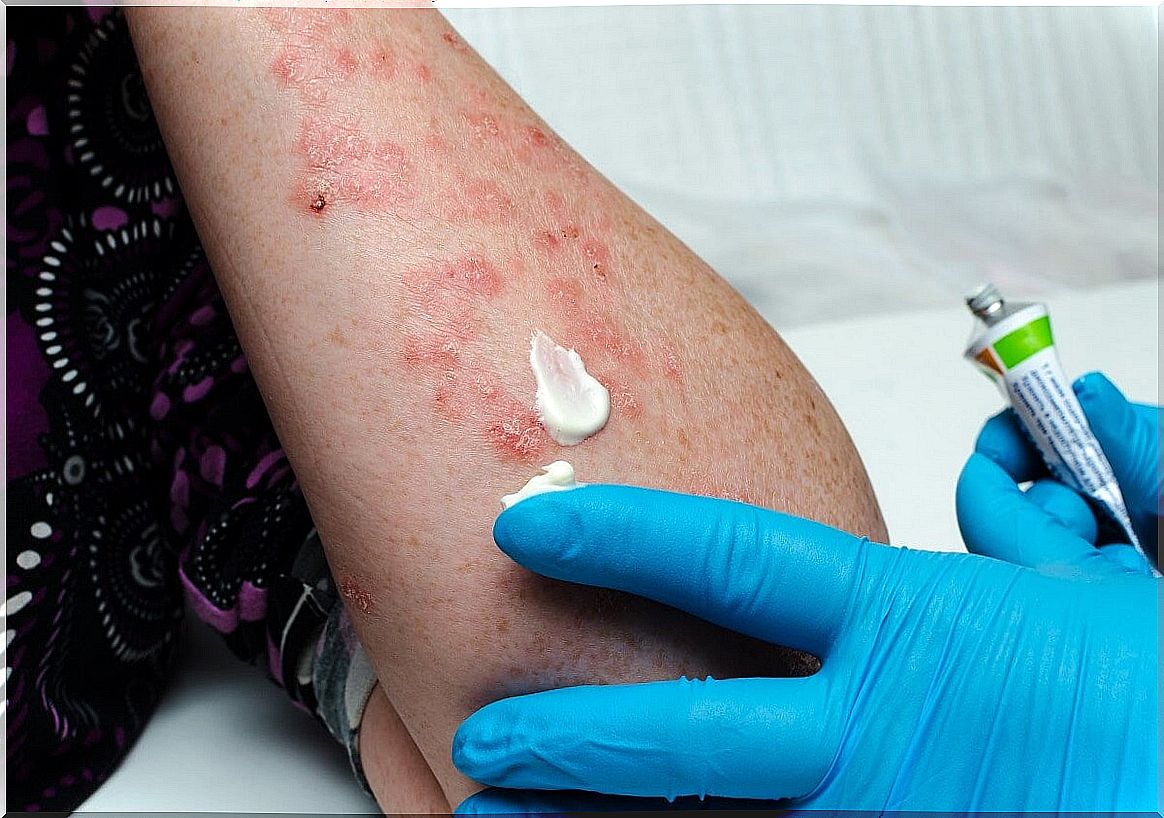
Other cutaneous manifestations associated with diabetes are the following.
- Dry skin. It is a very common condition among the diabetic population, but not exclusive to it.
- Palmar erythema. It is intense redness on the palms of both hands.
- Pigmentary purpura. They are dotted spots that appear on the legs, but can spread to other parts of the body. They are orange-brown in color.
- Lichen planus. They are purple, flat, itchy bumps.
- Psoriasis. It is a disease in which skin cells accumulate. In this way, they form flakes and dry spots that cause itching.
- Vitiligo. A disease characterized by the loss of pigmentation in irregular areas of the skin.
- Erythema erythema. There is redness and swelling, looking similar to erysipelas. It is considered a precursor to gangrene.
- Porphyria cutaneous late. A condition in which there are recurring blisters on areas of the body that are exposed to the sun.
Skin manifestations of diabetes complications
These signs occur when there are complications in the course of the disease. Within this group are the following conditions.
Macroangiopathy
As such, macroangiopathy is an alteration of the arteries that is considered a severe form of atherosclerosis. In this case, the signs of diabetes that manifest on the skin are cold feet, hair loss, atrophy, shiny skin, etc. It can lead to the formation of ulcers.
Microangiopathy
In this disease, the walls of the small arteries of the heart deteriorate. On the skin it manifests as diabetic dermopathy, pigmentary purpura, rubeosis faciei, and erythema similar to erysipelas.
Diabetic neuropathy
It corresponds to the neurological damage that can occur as a result of diabetes mellitus. Some of the manifestations of this pathology at the skin level are heat intolerance, redness, decreased sensitivity, burning in the legs (especially at night), etc.
Diabetic foot syndrome
It is one of the most common complications in diabetic patients. It refers to the ulceration or destruction of the deep tissues of the foot, including the bones. The lesion is almost always circular and progresses slowly. Sometimes the ulcers become infected and form deep abscesses, which is serious.
Skin infections
They are present in a percentage of between 20 and 50% of diabetic patients. These infections can be of two types:
- Mycotic infections. Among them are candidiasis, dermatophytosis, onychomycosis, mucormycosis and blastomycosis.
- Bacterial infections. They include impetigo, erysipelas, folliculitis, anthrax, furunculosis, styes, ecthyma, eristrasma, malignant external otitis, and pseudomonas aeruginosa.
Skin manifestations derived from treatment
They are considered an effect or reaction to drugs used to treat diabetes. It includes the following:
- Metformin. It is an antidiabetic medication that can cause various skin problems such as rash, itching, hives, erythema, psoriasiform rash, exudative erythema multiforme, and leukocytoclastic vasculitis.
- Insulin. There are reports of allergic reaction with urticaria in 1% of patients.
Faced with signs, go to the doctor

The signs of diabetes that appear on the skin are, in principle, harmless. However, this disease makes even simple dermatological problems become complicated at any given time. For this reason, any skin condition should be consulted and treated as indicated by the doctor.
These manifestations on the skin also serve as indicators or markers of both diabetes mellitus and possible complications. The appropriate thing then is to pay close attention to them.









